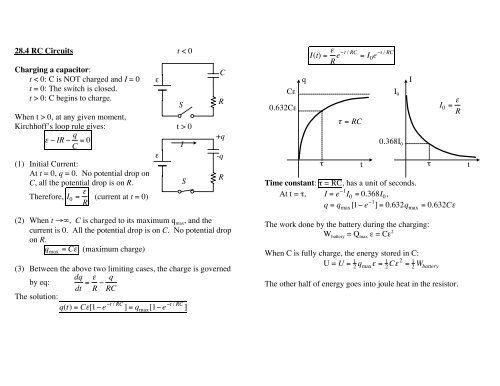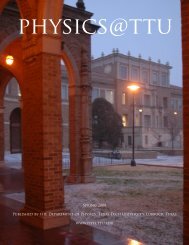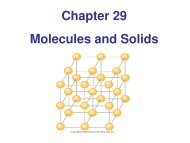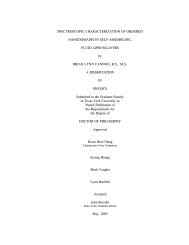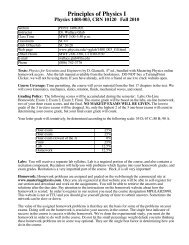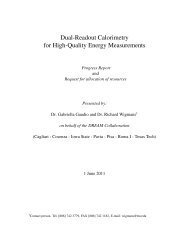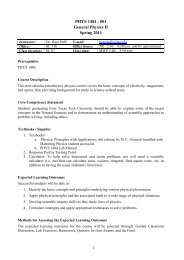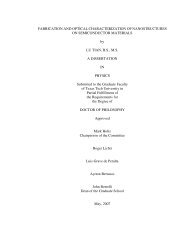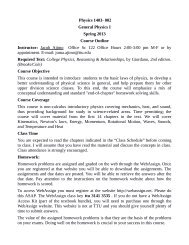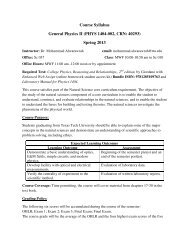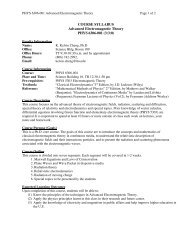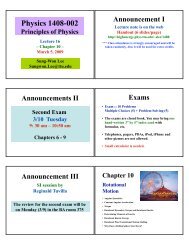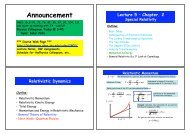Chapter 28 Direct Current circuits 28.1 Electromotive Force (emf ...
Chapter 28 Direct Current circuits 28.1 Electromotive Force (emf ...
Chapter 28 Direct Current circuits 28.1 Electromotive Force (emf ...
You also want an ePaper? Increase the reach of your titles
YUMPU automatically turns print PDFs into web optimized ePapers that Google loves.
<strong>28</strong>.4 RC Circuitst < 0I(t) = R et / RC t / RC= I 0 eCharging a capacitor:t < 0: C is NOT charged and I = 0t = 0: The switch is closed.t > 0: C begins to charge.When t > 0, at any given moment,Kirchhoff’s loop rule gives: IR q C = 0(1) Initial <strong>Current</strong>:At t = 0, q = 0. No potential drop onC, all the potential drop is on R.Therefore, I 0 = R(current at t = 0)St > 0ISCR+q-qRC0.632Cq = RCtTime constant: = RC, has a unit of seconds.At t = , I = e 1 I 0 = 0.368I 0 ,q = q max [1 e 1 ] = 0.632q max = 0.632CI 00.368I 0II 0 = Rt(2) When t , C is charged to its maximum q max , and thecurrent is 0. All the potential drop is on C. No potential dropon R.q max = C (maximum charge)(3) Between the above two limiting cases, the charge is governeddqby eq:dt = R qRCThe solution:q(t) = C[1 e t / RC ] = q max [1 e t / RC ]The work done by the battery during the charging:W battery = Q max = C 2When C is fully charge, the energy stored in C:U = U = 1 2 q max = 1 2 C 2 = 1 2 W batteryThe other half of energy goes into joule heat in the resistor.


